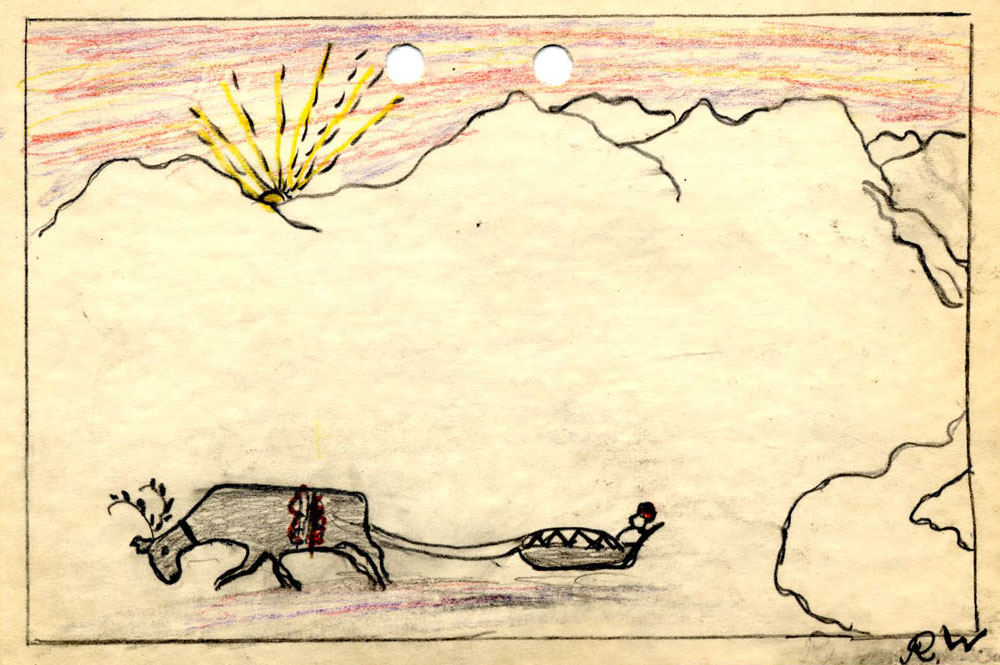The Sámi are the indigenous peoples of Sápmi, a region stretching over the northern parts of Scandinavia (i.e. Finland, Sweden and Norway) and parts of the Kola Peninsula in Russia. Reindeer herding is one of their traditional livelihoods.

Reindeer as cultural heritage
Sámi cultural heritage relies to a large extent on the reindeer. The hunting- and trapping society pursued wild reindeer as well as other game. Reindeer have been used as lure to trap predators, as a beast of burden, and as a draft animal. They have been tamed, milked, eaten and have provided clothing, as well. Tendons can be made into threads and intestines used as sausage skins. According to written sources, reindeer were already tamed and tended in herds as early as the 9th century. More large-scale reindeer herding existed from the 17th century on, partly due to an increased in taxation by the Crown.
Reindeer husbandry rights are based on ancient usage and are protected by law. In Sweden, this right is exclusive to the Sámi. Modern reindeer herding is for meat production. Free grazing is a prerequisite for profitable reindeer herding and this requires very large areas of land as reindeer are migratory.
Duodji is the term for the full panoply of traditional Sámi handcrafts and is dependent on materials from reindeer and other nature resources. Reindeer skins are tanned by traditional, environmentally friendly, methods. The fur can be used in the making of traditional clothes and shoes, and reindeer horns are used along with birch wood to make knives and jewellery.
Both Sámi culture and language depend on the practices involved in reindeer herding. There are hundreds of Sámi words describing reindeers’ appearance and behaviour, and for events in nature and weather conditions connected with the animals. Many of these words are not found in other languages. Other Sámi words describe how reindeer products are made, as in the processes of de-furring, tanning and drying pelts, making tendon thread, cutting reindeer furs or bällingskor, the Swedish term for traditional Sámi reindeer leather footwear, usually made of skin from the legs.They are also called nutukas, a Finnish word from Sámi, but there are many other terms in Sámi languages for these remarkable boots of reindeer hide – soft and supple that resist freezing temperatures and so are easy to take off and put on.
Marking reindeer
A reindeer mark is the combination of cuts on both the right and left ear of the reindeer. It tells you who the owner of the reindeer is. In Sweden, there are no wild reindeer. All reindeer are privately owned, by a child or an adult. An unmarked reindeer belongs to the Sámi village in the area. A reindeer mark is very personal and they are usually passed down within families and registered for use within a specific Sámi village. No-one is allowed to have more than one mark registered.
The Reindeer Marking Register
All this is the responsibility, in Sweden, of the Sámi Parliament, the Sametinget, which registers or de-registers the marks. The register is online as a service to Sámi villages and individual owners. According to statistics there were almost 4600 owners for more than 240,000 reindeer in 2020.
Author: Marlene Hugoson, Sweden, from the ISOF (Institutet för språk och folkminnen) website.
